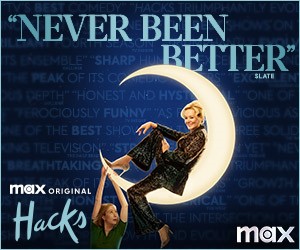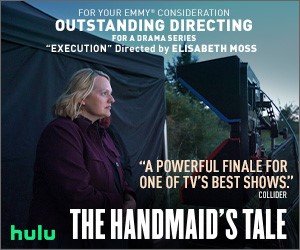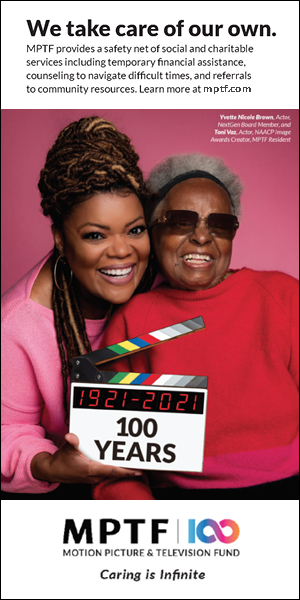UPDATED: September 27, 2012
The DGA recently released the episodic director diversity report for 2011-2012. In designing the parameters for the report, the DGA made several changes to its methodology and data collection to improve accuracy and make it easier to compare data to other years. These changes included defining specific start and end dates for each television season production cycle; capturing more DGA-covered episodes; implementing additional automated calculation procedures; and clarifying, in cooperation with the companies, the status of directors whose ethnicity or gender had previously been identified as “unknown.”
As a result of these improvements, the DGA was able to improve the data for the previous 2010-2011 television season to more accurately report the statistics. The data now shows that in the 2010-2011 television season, Caucasian males directed 72% of all episodes (not 77% as had been reported); Caucasian females directed 11% of all episodes (unchanged from the 11% that had been reported); minority males directed 14% of all episodes (up from the 11% that had been reported); and minority females directed 3% of all episodes (up from the 1% that had been reported). The changes in data are a result of capturing nearly 300 additional episodes for the season and more accurately identifying the diversity status of the directors.
Below is the original episodic director diversity report for 2010-2011.
LOS ANGELES – The Directors Guild of America today released a report analyzing the ethnicity and gender of directors hired to direct primetime episodic television across broadcast, basic cable and premium cable.
The DGA analyzed more than 2,600 episodes produced in the 2010-2011 television season from more than 170 scripted television series. The report showed that Caucasian males directed 77% of all episodes; Caucasian females directed 11% of all episodes; minority males directed 11% of all episodes and minority females directed just 1% of all episodes. Among one-hour series, Caucasian males directed 80% of episodes, and in half-hour series, Caucasian males directed 74% of all episodes.
The shows highlighted below are from major production companies ABC, CBS, Fox, HBO, NBC, Sony, Warner Bros. and other production companies whose shows appear on broadcast, basic cable and premium cable networks. They do not include series that have been cancelled. First-year shows are broken out separately because hiring decisions on first-year shows are often made differently than shows in their second seasons or beyond. Pilots are not included in the statistics. Shows that primarily hired only one or two directors for the entire season [Big Bang Theory; Eastbound and Down; The Game; How I Met Your Mother; It’s Always Sunny in Philadelphia; The League; Louie; Retired at 35; Two and a Half Men] were included in the overall data, but are not singled out in the lists below.
DGA's "WORST OF" Lists
Following are the shows with the worst records of hiring women and minority directors for the 2010-2011 television season:
THE FOLLOWING SHOWS HIRED NO WOMEN AND NO MINORITY DIRECTORS:
Title (Production Company) – Percentage of Episodes by Women or Minority Directors:
- Bored to Death (HBO) – 0%
- Curb Your Enthusiasm (HBO) – 0%
- Fringe (Warner Bros.) – 0%
- iCarly (Uptown Productions/MTV/Viacom) – 0%
- Justified (Woodridge Productions/CPT Holdings/Sony) – 0%
- Leverage (Leverage Productions) – 0%
- Victorious (Uptown Productions/MTV/Viacom) – 0%
- Weeds (Weeds Productions) – 0%
THE FOLLOWING SHOWS HIRED WOMEN OR MINORITY DIRECTORS FOR FEWER THAN 15% OF EPISODES:
Title (Production Company) – Percentage:
- House (NBC) – 4%
- The Office (NBC) – 4%
- CSI (CBS) – 5%
- Supernatural (NS Pictures) – 5%
- Good Luck Charlie (It’s a Laugh Productions) – 6%
- Army Wives (ABC) – 8%
- Boardwalk Empire (HBO) – 9%
- Bones (Fox) – 9%
- Cougar Town (FTP Productions/ABC) – 9%
- Desperate Housewives (ABC) – 9%
- True Blood (HBO) – 10%
- Dark Blue (Horizon Scripted Television) – 10%
- Castle (ABC) – 13%
- NCIS (CBS) – 13%
- Modern Family (Fox) – 13%
- Gossip Girl (Warner Bros.) – 14%
The DGA noted that some series on the DGA’s “WORST OF” lists showed worrisome declines from their previous year hiring patterns. House and Army Wives hired women or minority directors at significantly higher rates in 2009-2010 but failed to maintain the diversity of their hiring practices for the most recent television season.
DGA's "BEST OF" List
At the same time, the following shows deserve to be highlighted for their more diverse hiring records in 2010-2011:
SHOWS THAT HIRED WOMEN OR MINORITY DIRECTORS FOR AT LEAST 30% OF EPISODES:
Title (Production Company) – Percentage:
- The Middle (Warner Bros.) – 63%
- Hung (HBO) – 60%
- In Treatment (HBO) – 54%
- 90210 (CBS) – 45%
- Treme (HBO) – 45%
- The Good Wife (CBS) – 39%
- Drop Dead Diva (Woodridge Productions/CPT Holdings/Sony) – 38%
- CSI: NY (CBS) – 36%
- Private Practice (ABC) – 36%
- Rules of Engagement (Montrose Productions/CPT Holdings/Sony) – 35%
- Nurse Jackie (Nurse Productions/Lions Gate) – 33%
- Grey’s Anatomy (ABC) – 32%
- CSI: Miami (CBS) – 32%
- In Plain Sight (NBC) – 31%
- Mad Men (U.R.O.K. Productions/Lions Gate) – 31%
- 30 Rock (NBC) – 30%
First-Year Series
Although the DGA study did not include shows whose first season of production took place during 2010-2011 in the “WORST OF” and “BEST OF” lists above, the DGA feels that it is important to call attention to those shows that have already exhibited unfavorable patterns in their first season with the hope that such attention will help encourage these series to consider more diverse hiring practices in the future.
"WORST OF" First-Year Series
- Franklin & Bash (Woodridge Productions/CPT Holdings/Sony) – 0%
- Hot in Cleveland (King Street) – 0%
- Nikita (NS Pictures) – 0%
- Teen Wolf (On Site Productions/MTV/Viacom) – 0%
- Melissa and Joey (Prodco) – 3%
- Raising Hope (Fox) – 5%
- Breakout Kings (Fox) – 8%
- Harry’s Law (Bonanza Productions/Warner Bros.) – 9%
- Hawaii Five-0 (Eye Productions/CBS) – 13%
Separately, the DGA congratulates the first-year shows, highlighted below, that have already demonstrated a commitment to diverse hiring practices.
"BEST OF" First-Year Series
- Let’s Stay Together (Breakdown Productions/BET) – 100%
- Are We There Yet? (AWTY Productions) – 86%
- Pair of Kings (It’s a Laugh Productions) – 50%
- The Walking Dead (Stalwart Films/Stu Segall Productions) – 50%
- The Killing (Killing Productions/TVM Productions/Fox) – 46%
- Body of Proof (Paige Productions/ABC) – 33%
- Pretty Little Liars (Horizon Scripted Television) – 33%
In the 2009-2010 television season, Caucasian males directed 75% of the episodes surveyed; Caucasian females directed 11% of episodes; minority males directed 12% of episodes; and minority females directed 2% of episodes. While the figures remained static for Caucasian females in 2010-2011, the percentage of episodes directed by minority men dropped (from 12% to 11%) and the percentage of episodes directed by minority women dropped by half (from 2% to 1%). The statistics seem to demonstrate that as a whole, most production companies have demonstrated little or no interest or effort in increasing diversity in their hiring practices from year to year.
Over the years, the Guild’s African American, Asian, Latino and Women’s Committees have held meetings and networking events with producers, networks and studio representatives to introduce talented directors to key producers and television executives.
At the urging of the Guild, several production companies established diversity programs designed to increase the number of women and minority directors and give them exposure to executive producers and others who hire. However, these diversity programs have borne disappointing results.
“It’s not enough to just give lip service to the idea of increasing diversity behind the camera,” said Paris Barclay, the DGA’s First Vice President and Co-Chair of the Diversity Task Force of the DGA National Board. (Barclay also served as an executive producer of In Treatment and is currently an executive producer for Sons of Anarchy.) “These programs are so far failing to live up to their promise. So we’re going to take the discussion straight to the people on each show who make the hiring decisions.”
The DGA negotiated a new provision in its most recent collective bargaining agreements, which took effect on July 1, which will allow it to meet directly with executives responsible for hiring at the individual show level. Now that the Guild has completed its analysis of diversity hiring practices in the most recent television season, the Guild is scheduling meetings with individual shows to address the problem.
“We are encouraging shows, production companies, and networks when they weigh in, to offer opportunities to up-and-coming directors from all backgrounds,” said Lesli Linka Glatter, Board Member and Co-Chair of the Diversity Task Force of the DGA National Board. (Glatter won a DGA Award last year for directing an episode of Mad Men and is currently a co-executive producer for The Playboy Club.) “We’ve heard the excuses from those responsible for hiring that they don’t want to take a chance on a new director. But the truth is that the industry hires new directors all the time; it’s just that most of them are white males.”
DGA statistics show that of the 130 first-time episodic directors hired in calendar years 2009 and 2010, 78% were Caucasian males, 13% were Caucasian females, 7% were minority males and 2% were minority females.
Barclay added, “The question each producer needs to ask is, ‘Am I the type of person who makes excuses or takes action?’”
The DGA compiled the statistics for this report from information provided by the production companies to the DGA pursuant to the requirements of the collective bargaining agreement for episodes produced during the 2010-2011 season, and then made its best effort to validate the statistics with the production companies directly by offering every production company the opportunity to review its own statistics. Some companies failed to verify their statistics.
Correction to Statistic on "Burn Notice"
UPDATED: September 27, 2012
In the 2011 report, the DGA verified statistics for all shows with representatives of the employers. One issue that arose after the release of the report was related to the series Burn Notice, which had been incorrectly placed on the “Worst Of” list based on statistics that had been verified by the employer. Further investigation showed that the error occurred when only the first half of Burn Notice’s episodes for the season were analyzed; basic cable production cycles often differ significantly from traditional broadcast network production cycles, one of the reasons that the DGA changed its methodology in this year’s report to specifically define start and end dates for production cycles. The improved methodology shows that in the 2010 basic cable production cycle, Burn Notice had 18 episodes and hired women or minority directors 28% of the time.








































